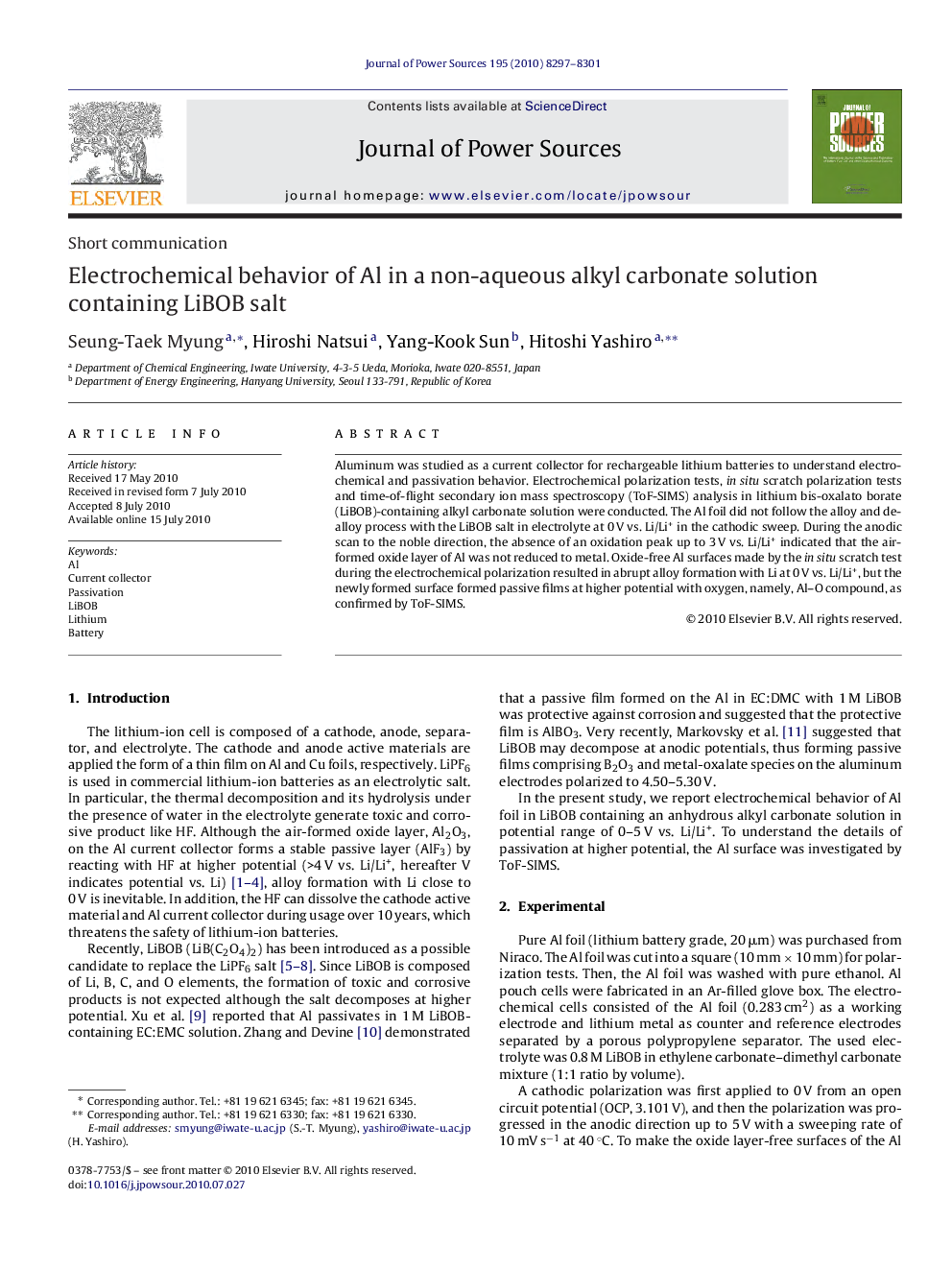| Article ID | Journal | Published Year | Pages | File Type |
|---|---|---|---|---|
| 1293687 | Journal of Power Sources | 2010 | 5 Pages |
Aluminum was studied as a current collector for rechargeable lithium batteries to understand electrochemical and passivation behavior. Electrochemical polarization tests, in situ scratch polarization tests and time-of-flight secondary ion mass spectroscopy (ToF-SIMS) analysis in lithium bis-oxalato borate (LiBOB)-containing alkyl carbonate solution were conducted. The Al foil did not follow the alloy and de-alloy process with the LiBOB salt in electrolyte at 0 V vs. Li/Li+ in the cathodic sweep. During the anodic scan to the noble direction, the absence of an oxidation peak up to 3 V vs. Li/Li+ indicated that the air-formed oxide layer of Al was not reduced to metal. Oxide-free Al surfaces made by the in situ scratch test during the electrochemical polarization resulted in abrupt alloy formation with Li at 0 V vs. Li/Li+, but the newly formed surface formed passive films at higher potential with oxygen, namely, Al–O compound, as confirmed by ToF-SIMS.
